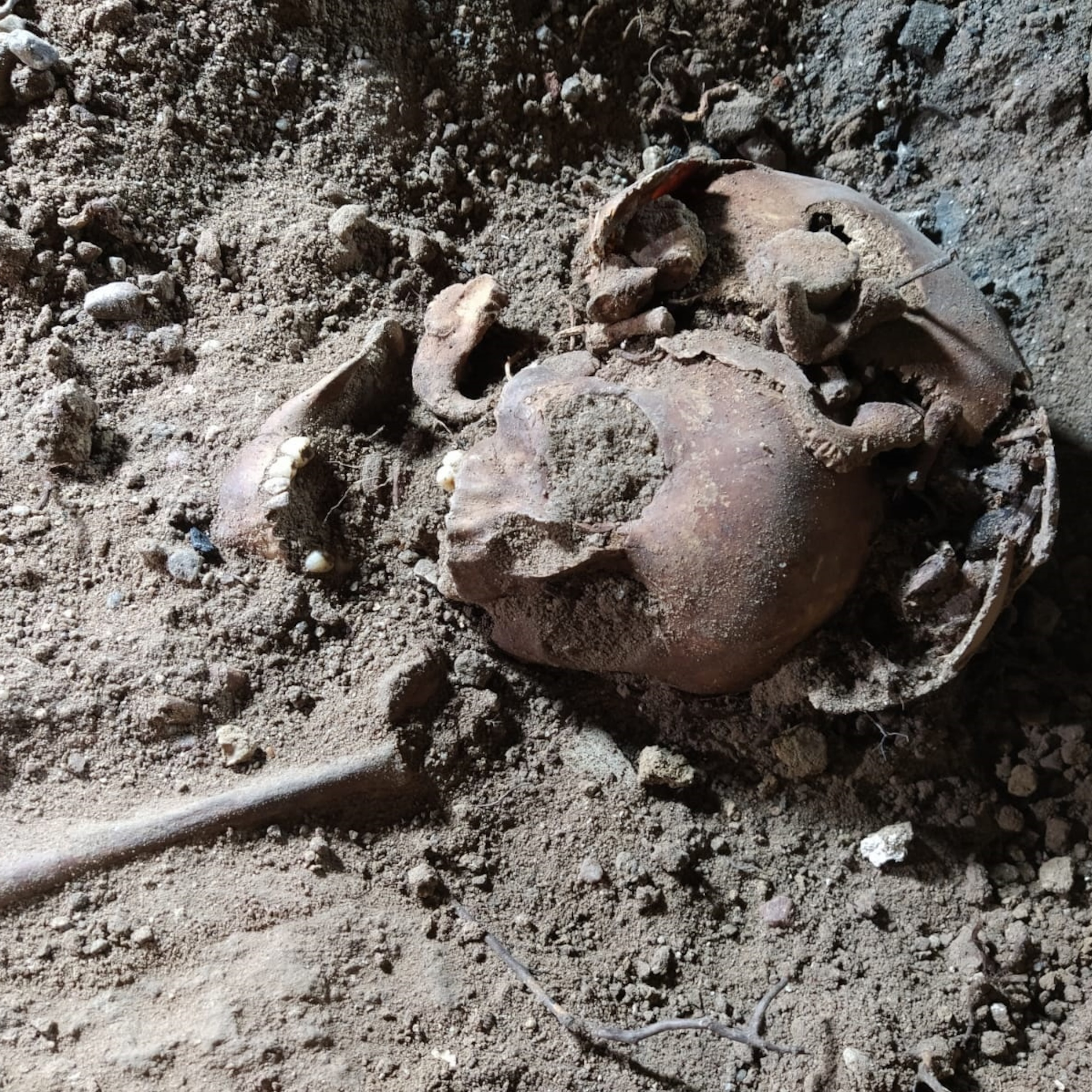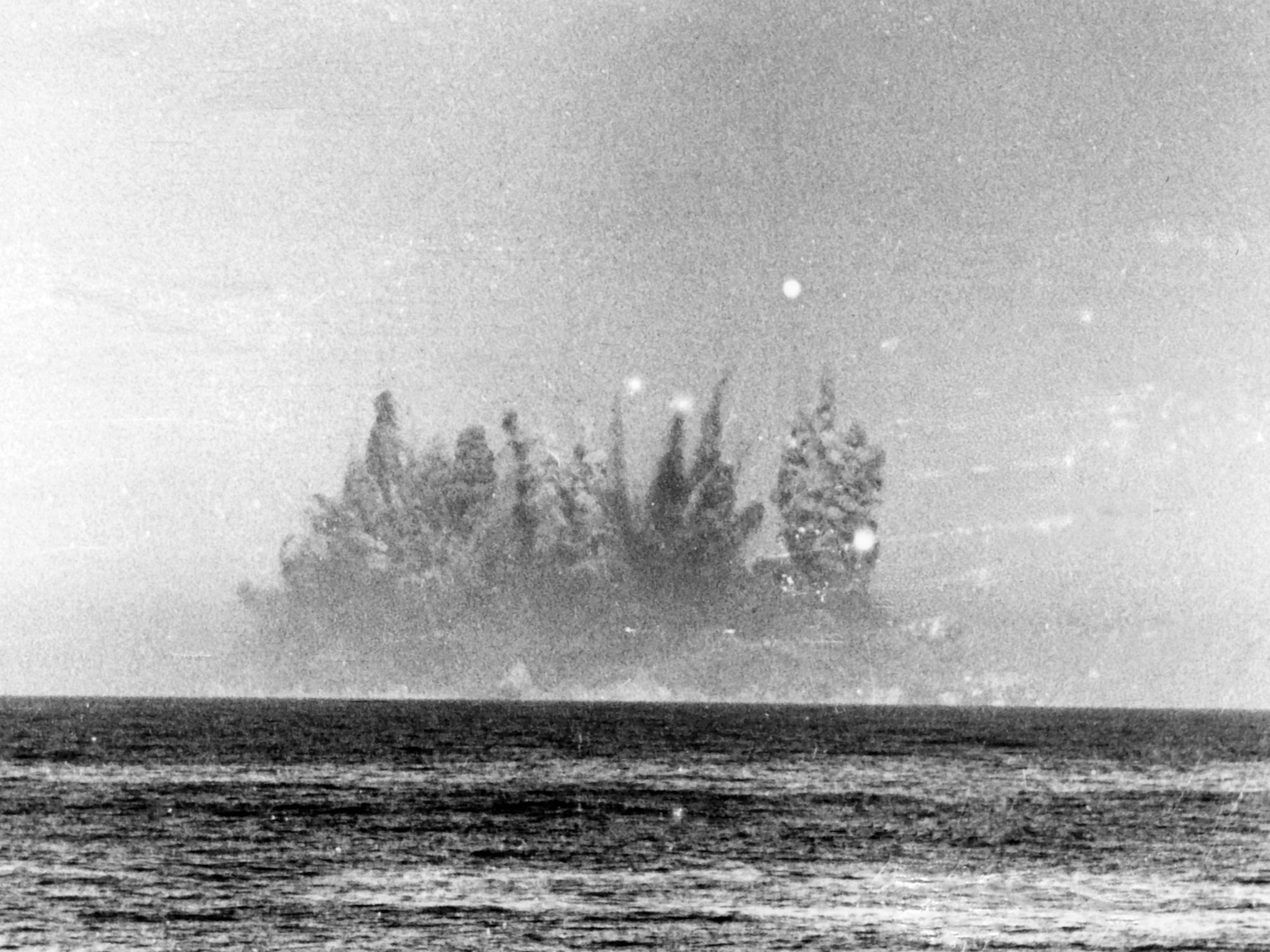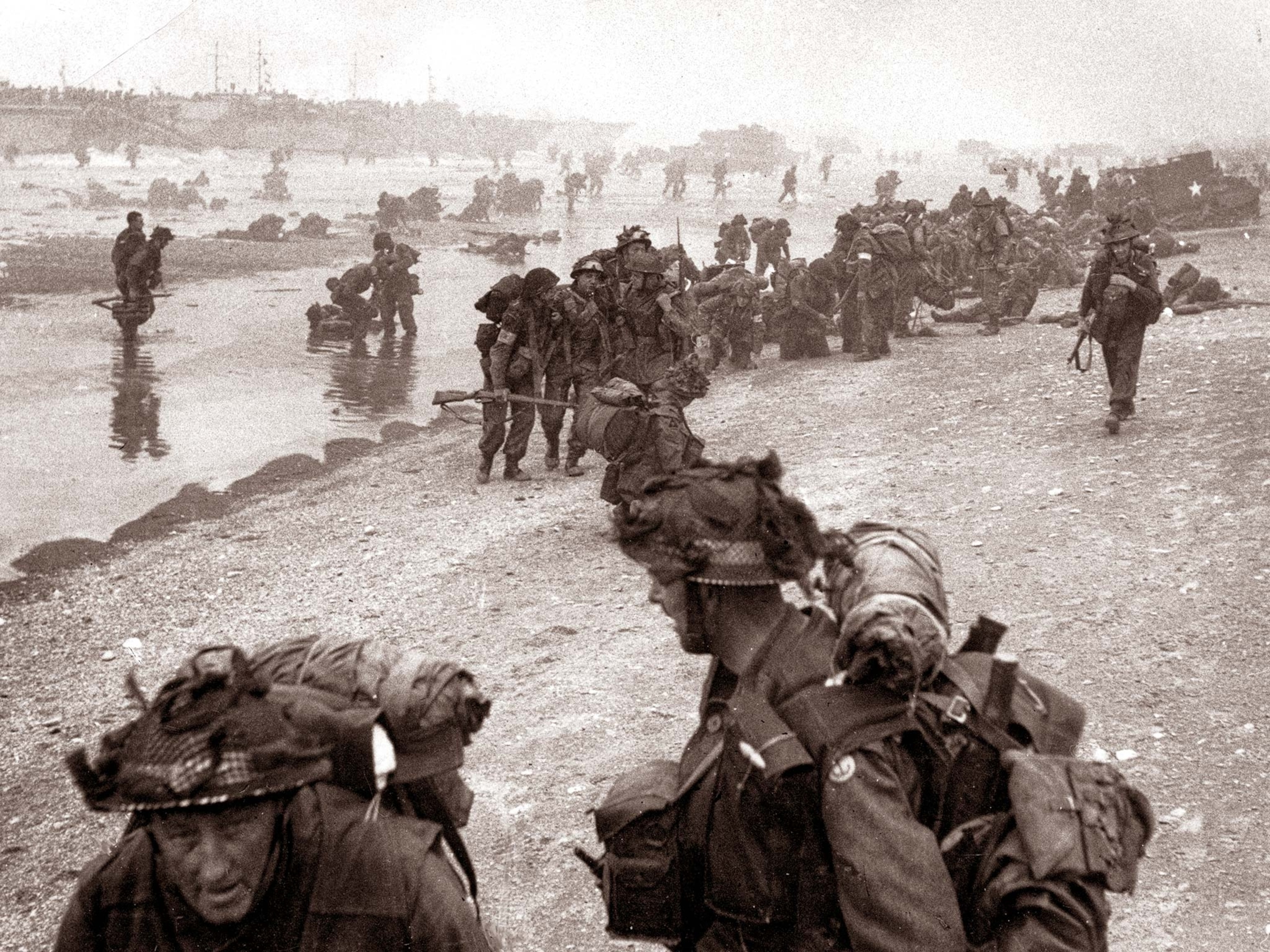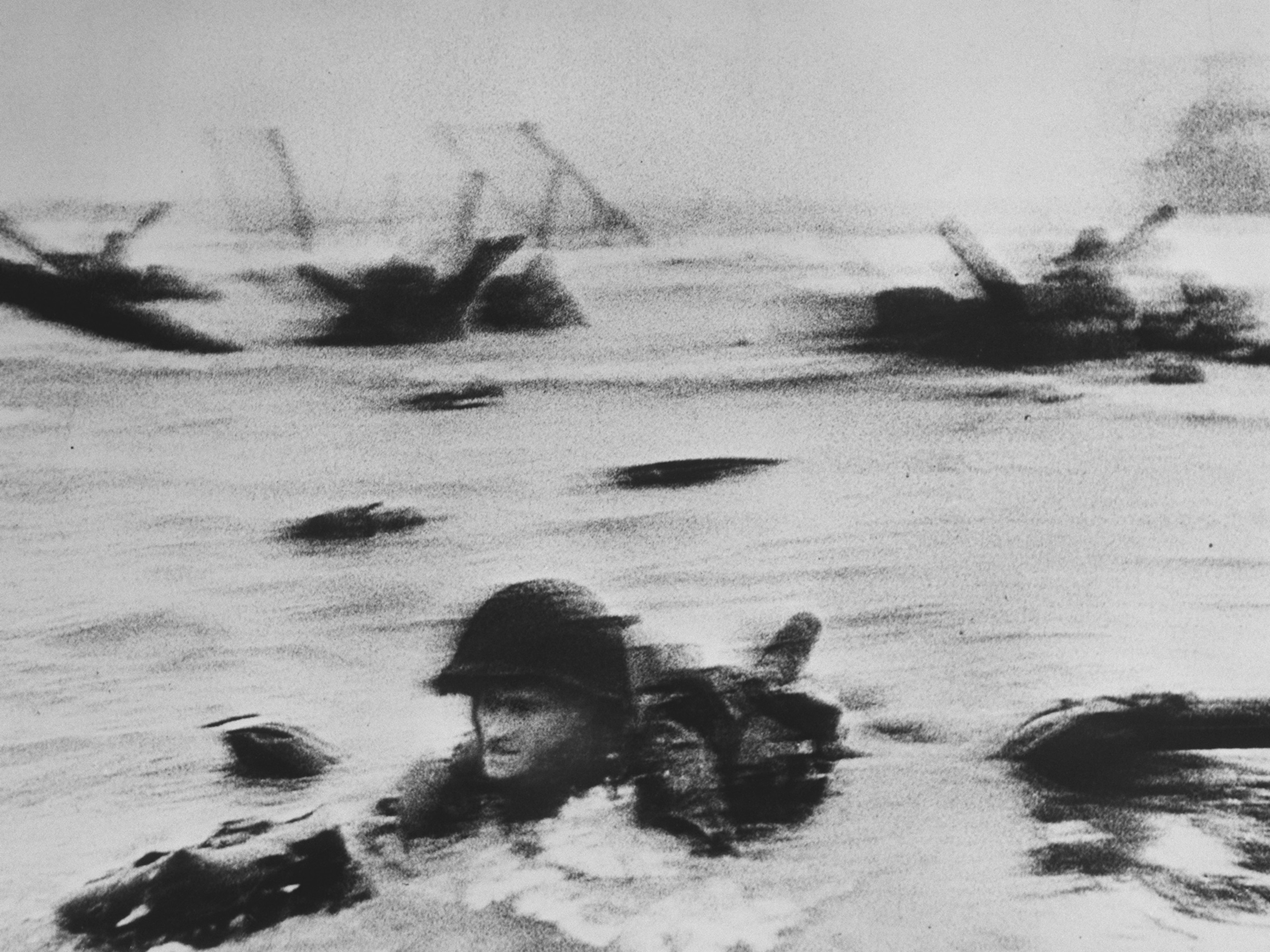WWII’s brutality still haunts the children who survived it
75 years later, a writer recalls the horrors her mother suffered—and how she’s faced them.

At the age of eight, my mother Teresa was robbed of her childhood.
Asleep in the predawn hours of September 1, 1939, she was clutching a beloved stuffed fox when the fearsome thunderstorm of a German air assault announced the outbreak of World War II.
Fifteen days later, the war arrived in her front yard as Polish soldiers dug foxholes in the family garden. Germans advancing on Warsaw fired artillery on Młociny, the picturesque village where her family lived, eight miles northwest of the capital. Horses galloped through the meadow as a Polish cavalry regiment joined the defense. Germans ambushed and “killed them—just like that,” my mother recalls, snapping her fingers.


Artillery shells destroyed the roof of her home, punctured a wall in her bedroom, crushed the porch, and exploded in the garden. Teresa, her older brother, Thomas, and their parents huddled in the cellar for hours, agonized by the groaning of a dying Polish soldier pleading for help they were powerless to provide.
By the end of the day, four Polish fighters lay dead in their yard. German troops ordered them out of the home, “machine guns to the throat,” my mother remembers. A Jewish neighbor was murdered before their eyes. His hysterical wife and children were led away; my mother never saw them again. My grandfather and other men were marched away under armed guard. Women and children were ordered to bury the corpses. Tom and my grandmother buried 14 bodies that day, including a decapitated Polish machine gunner. They were given one hour to gather their belongings and evacuate into the forest.
As they collected what could fit in an old baby carriage, a German soldier snatched my mother’s stuffed silver fox and placed it on the cab of his truck, a perverse trophy to the subjugation of other humans. (This is why stories from WWII’s last survivors matter now more than ever.)
LIMITED TIME OFFER
A stolen childhood
The next five years brought unimaginable horrors. The 75 years since Victory-Europe Day when the Nazis surrendered, commemorated this Friday, have not been enough to erase the indelible scars. My mother was just one of tens of millions of children whose lives were brutalized by forces of history beyond their control.


She was a lucky one. Her name, Teresa Romanowska, appears without the footnote “deceased” on the “Remembrance List” of the Nazi camp where she was processed. Yet today, her deepest memories, her persistent, phantom fears, are rooted in those formative years. Even six decades in the United States, across the ocean and on the other side of the war, couldn’t erase the trauma of lost innocence. (Hear about the war from WWII's last living voices.)
My mother remembers her prewar childhood as idyllic, a carefree life in a country house surrounded by vegetable gardens and fruit trees; beehives and chickens; cows and horses; a temperamental pony named Kucka; and a bird dog named Faithful.
Her parents came from educated nobility; her father, Bohdan Romanowski, was a descendant of Kazimierz Pułaski, a Polish nobleman who fought in the American Revolution and famously saved George Washington’s life in 1777. My grandfather, an engineer educated in Poland, Germany, and Imperial Russia, ran a sugar beet plant in a village called Choceń in central Poland when my mother was born.

Her cosmopolitan mother, Alina Sumowska Romanowska, spoke four languages and grew up in what is now Ukraine, on a family estate that was burned in the 1917 Russian revolution, forcing them to flee to Kraków.
The Great Depression shut down the sugar plant in 1933. The family moved to Młociny, a bucolic enclave between the Kampinos Forest and the Vistula River, and built a two-story villa. They scrimped until Bohdan found a job with an American company. In 1937, he was able to buy a brick factory.
When the Nazis overran Młociny in September 1939, my grandfather was captured and forced to work at first as an interpreter at a German Army headquarters 30 miles east of Warsaw. As a Dresden-trained mechanical engineer, he would have been useful to the German war machine, but he refused to collaborate. His brick factory was confiscated.

Without a livelihood, my grandfather had to sell their land and rent an apartment in the Warsaw suburb of Bielany. The only work he could find was manual labor as a streetcar repairman. Their food rations were meager, barely enough to keep them from starving. Thomas, then 14, devoured Dickens novels for the vicarious pleasure of the fantastical banquets. My grandmother Alina bartered jewelry to supplement their diet.
Death and rebellion in Warsaw
Nazi ideology saw not only Jews, but also Roman Catholic Poles like my mother’s family, as subhumans occupying territory crucial to Germany. In a closed-door speech to his generals shortly before the invasion of Poland, Adolf Hitler was quoted as having ordered to “send to death mercilessly and without compassion men, women, and children of Polish derivation and language. Only thus shall we gain the Lebensraum [living space] which we need.”
Polish Jews were targeted first. By the spring of 1940, the Nazis were terrorizing non-Jews linked to the resistance as well, staging public executions in downtown Warsaw. My mother’s family was horrified to learn their former German governess had turned Nazi spy and denounced their neighbor and French tutor for not declaring an arsenal of hunting guns that the tutor's brother and my grandfather had buried before the invasion. She was sent to Auschwitz and perished there.

That autumn, Warsaw’s 350,000 Jews were forced into a ghetto surrounded by 10-foot walls topped with razor wire. Those who escaped were executed on the spot, such as a woman and child my uncle saw an SS soldier grab as they tried to squeeze out of a sewer. In 1942, the Nazis shipped 265,000 Warsaw Jews to their deaths at Treblinka extermination camp. In 1943, those who remained launched the most important Jewish rebellion in occupied Europe, but the Warsaw Ghetto Uprising was crushed in a month.
A year later, Polish resistance leaders plotted to liberate the city from the Nazis as the Soviets approached from the east. Tom, then 19, was secretly managing distribution of an underground press bulletin. On August 1, 1944, he warned the family that an order would be given at 5 p.m. to launch the Warsaw Uprising. That day, my grandfather never made it home.
For 63 days, the Nazis launched a relentless barrage, firing artillery and bombs on the city day and night. Tens of thousands of citizens were massacred in the streets. In September, a Nazi brigade arrived on my mother’s block, ordered everyone to the street, and began hurling incendiary devices into homes as punishment. The family had just finished lunch, and in the panic my mother ran out, carrying dirty dishes with her.

Tom impulsively ran back to try to remove the firebomb. A soldier aimed his rifle and Alina shouted out, “Tom! Tom! Get down, he’s going to kill you!” Tom escaped, but the house burned. “I was standing in the middle of the street with a basin of dirty dishes, watching our home go up in flames,” my mother remembers.
“Teresa, jump!”
The Nazi leadership gave orders for the inhabitants of Warsaw to be killed and the city leveled. Deportations to camps began with civilians transferred to Pruszków, west of Warsaw, where the Nazis converted a railway workshop into a transit camp known as Durchgangslager 121. In three months, 650,000 residents of the city and its outskirts were processed there, crammed into narrow train workshops separated by barbed wire and guarded by Gestapo and soldiers.
“If you needed to go to the bathroom, you just had to squat there and stand in it,” my mother recalls. Trenches normally used for repairing train cars now overflowed with sewage, oil, and garbage. There was typhus, dysentery, and lice, but Teresa feared the Germans dressed as medical staff more than the squalor and disease.


One day, a pregnant woman gave birth, and a guard grabbed the newborn and drowned it in an oil pit. The anguished mother let out a blood-curdling scream before hurling herself to her death after her baby—a scene that replays itself in my mother’s nightmares to this day.
Families were divided. Strong young men, including Tom, were sent to forced labor camps in Germany; my mother and grandmother were assigned to a group destined for concentration camps. My grandmother gave her remaining jewelry to a guard, hoping it would buy them better treatment. But she and my mother were packed into cattle cars headed, they feared, to Auschwitz.
The train stopped outside Kraków to air out the stench of excrement from the compartments, and while the guard copped a smoke as the train began to move, my grandmother leaped, shouting “Teresa, jump!” My mother followed and ran for cover in nearby bushes. Shots rang out in their direction as the train rattled away, but they weren’t hit. They never knew if it was luck, or if that bribe made a difference.

They hid till nightfall, then followed the tracks to Krakow, where they reached the home of Alina’s sister Ewa, who lived in the home of her father-in-law, a well-known Polish artist named Józef Mehoffer.
Teresa and her mother hid in the empty servants’ quarters for the remainder of the war. The Mehoffer House is now a public art museum, the rooms preserved as they were when my mother lived there.
The records at Durchgangslager 121, now a memorial to those rounded up in the Warsaw Uprising, show that my mother’s train was bound for Mauthausen, a camp in Austria mostly used for “extermination through labor” of intellectuals and higher social classes in countries occupied by Germany.
On April 7, 1945, Americans in Sherman tanks liberated the German village where my uncle was a forced laborer. (Tom never returned to live in Poland, making his way instead to the U.S., where he later enlisted to fight in Korea, attended MIT on the GI Bill, and built a distinguished career as a nuclear physicist. He brought my mother to America as a graduate student in 1959.)
On May 6, 1945, the German city of Breslau (now the Polish city of Wrocław) surrendered to the Soviets, and my grandfather was released from forced labor. It took him a month on foot and by Red Cross transport to reach Kraków.
My mother answered his knock, but didn’t recognize the skeleton in a baggy coat with dirty feet poking through torn shoes. Thinking he was a beggar, she shut the door, before he protested, “Teresa, I am your father.”
Exhausted by his trek from Germany to Poland, he spent the next year in and out of hospitals, but it was too late. He died in August 1946, age 61. My grandmother’s mental health deteriorated, and she was confined to an institution several times for electric shock treatments. After recovering, she eventually found work as a French and German translator at a state agency to support herself and my mother.
Battle-hardened and haunted
For Teresa, the war changed everything. It killed her father, broke her mother, and pushed her brother far from home. Under German occupation, “we were not treated as human,” but as disposable, “without souls,” she says. It’s hard to think of a girl being battle-hardened at 13, but the war made her tough and deeply distrustful. (Meet the forgotten 'wolf children' of WWII.)
That grit helped her survive the indignities of years that followed. Life under Soviet occupation was grim, and she came to despise the communists almost as much as the Nazis. Her family was allocated a one-room apartment in Warsaw with shifts in a communal kitchen and only weekly access to public showers. She earned a masters in geography, but never joined the Communist Party, so her opportunities were limited until she came to the U.S. Life here dealt other blows: a bitter divorce, challenges returning to the workforce, and financial struggles. Yet she stubbornly picked herself up and persevered, earning a Ph.D. in library science.

Now 89, my mother suffers from dementia. But some tears to the fabric of a young life are never repaired or forgotten. After a debilitating stroke last year, it was war memories that pushed through the haze. Despite partial paralysis, she fought off ICU nurses trying to give her shots because she thought they were Nazi prison guards doing experiments. She demanded I cover air vents in her room because she saw spies listening from the ceiling. She hallucinated soldiers marching outside her window. When the delusions dissipated, it was stubborn determination that sped her rehabilitation. She amazed therapists with her force of will to restore some movement to her left arm and leg.
She now lives in a nursing home where we haven’t been able to visit her for two months because of coronavirus restrictions. Her survivor’s instincts may be helping her to cope with isolation better than many. She got pneumonia, but recovered. She's “a tough old bird,” my husband reassures me. That indomitable will to survive was forged in the fires of her childhood.
Indira Lakshmanan is the senior executive editor for news and features at National Geographic Partners. She has reported from more than 80 countries on six continents, covering everything from wars and world leaders to environmental threats and endangered cultures.












